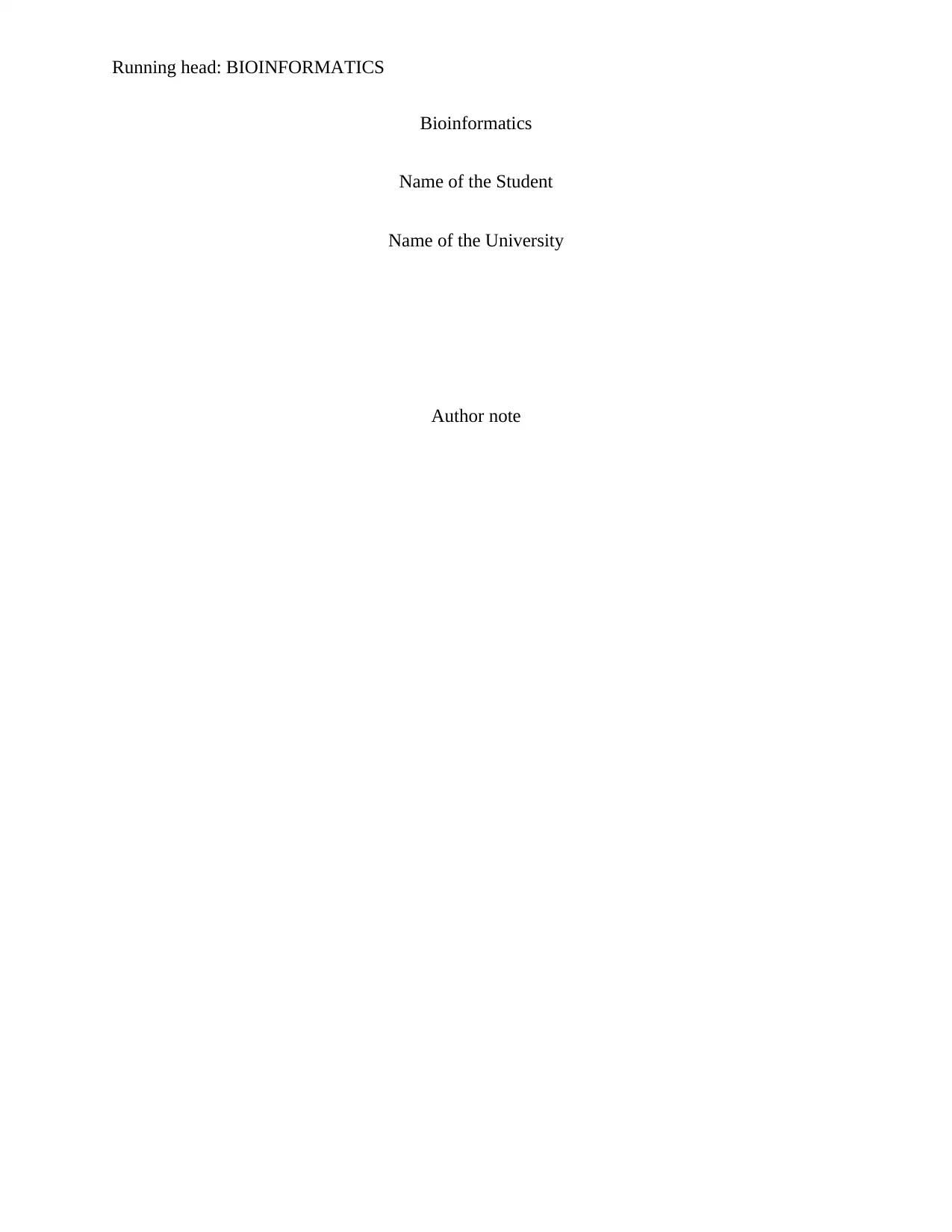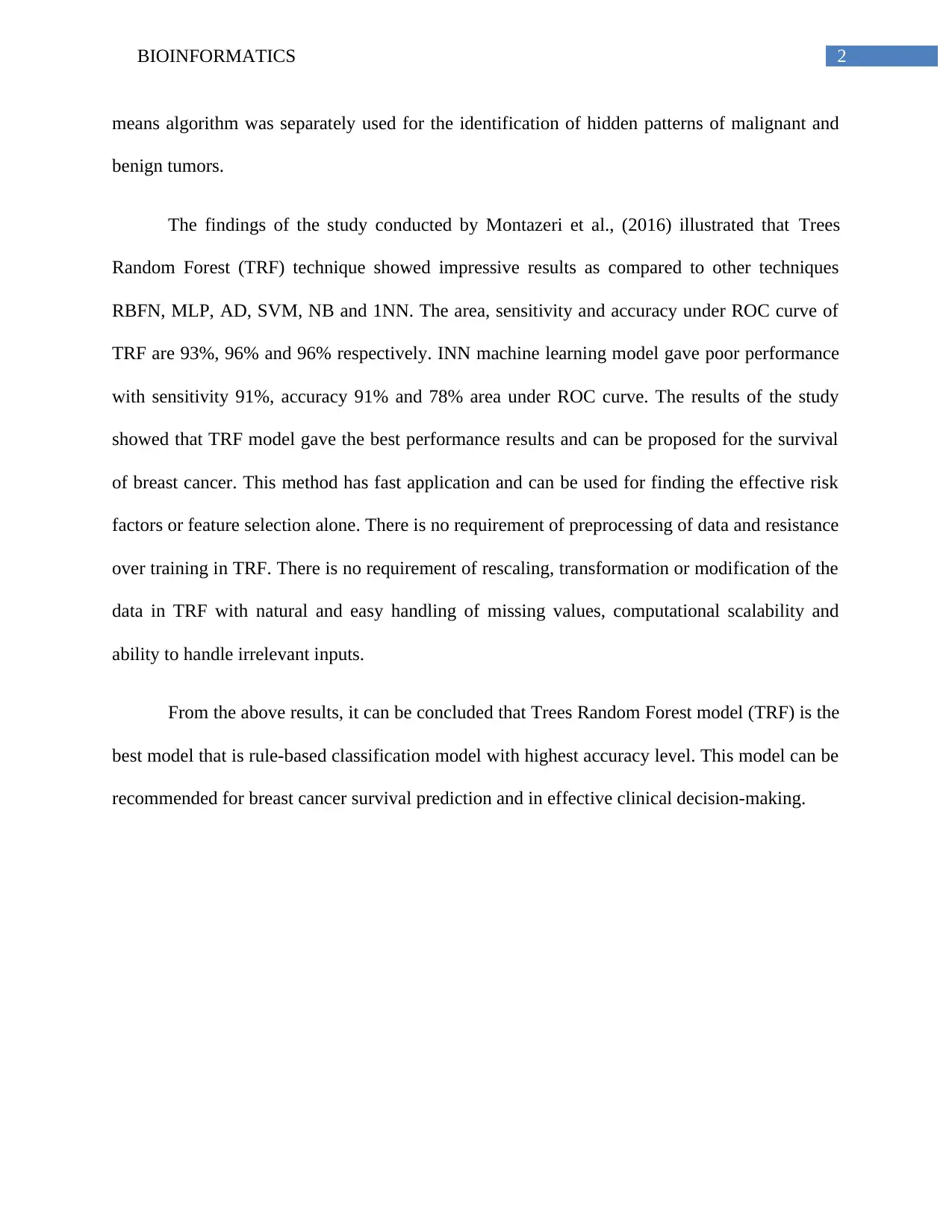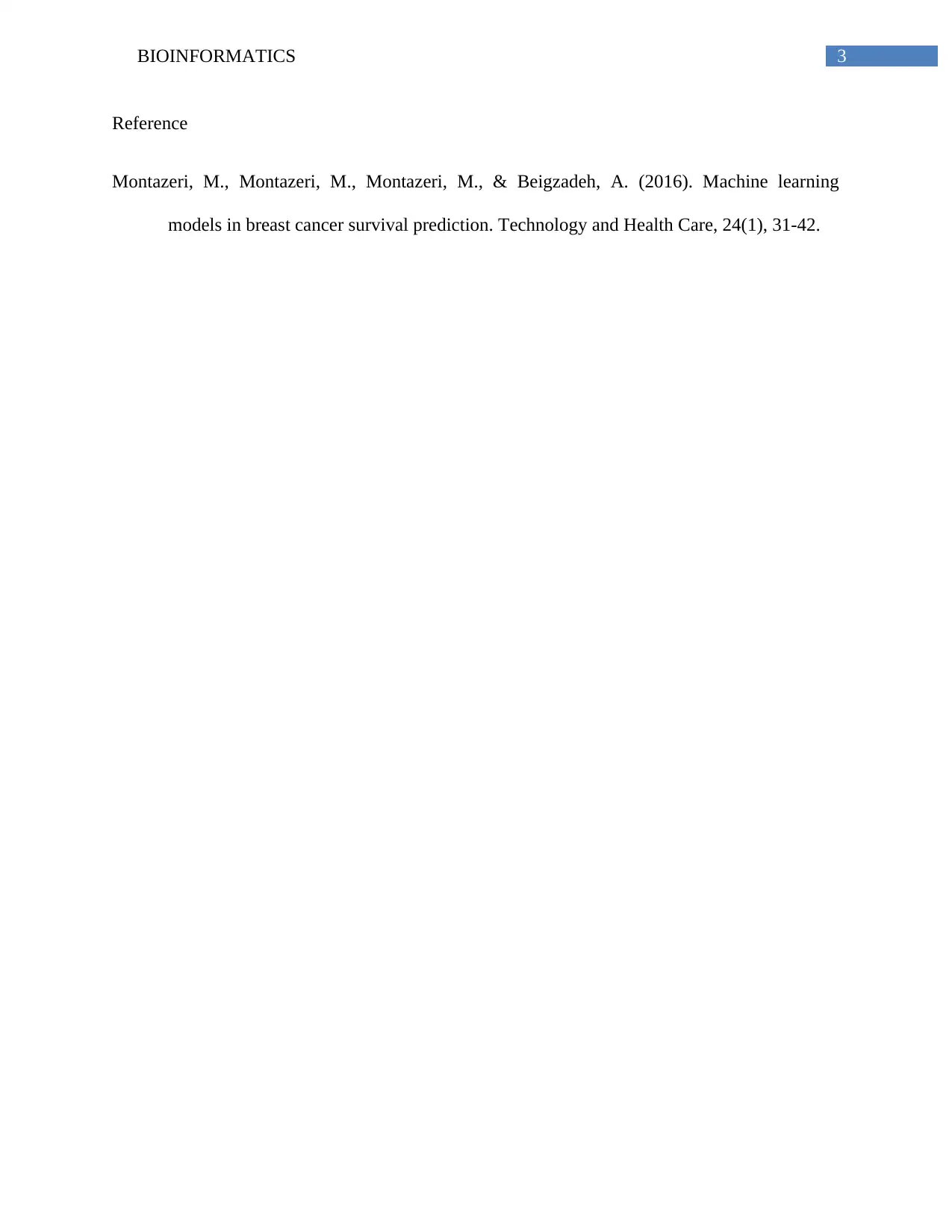Analysis of Machine Learning Models for Breast Cancer Survival
VerifiedAdded on 2020/05/11
|4
|665
|193
Report
AI Summary
This report analyzes the application of machine learning models in breast cancer survival prediction, focusing on the work of Montazeri et al. (2016). The study investigated the effectiveness of various machine-learning techniques, including Naive Bayes, 1-Nearest Neighbor, Trees Random Forest, Support Vector Machine, Multilayer Perceptron, RBF Network, and AdaBoost, for predicting breast cancer survival. The researchers utilized a dataset of 900 patients and evaluated the performance of these techniques based on precision, accuracy, specificity, sensitivity, and area under the ROC curve. The results showed that the Trees Random Forest model outperformed other models, achieving high accuracy, sensitivity, and area under the ROC curve. The report highlights the advantages of the Trees Random Forest model, such as its fast application, feature selection capabilities, and ease of handling missing values, concluding that it is a highly effective rule-based classification model for breast cancer survival prediction and clinical decision-making.
1 out of 4





![[object Object]](/_next/static/media/star-bottom.7253800d.svg)